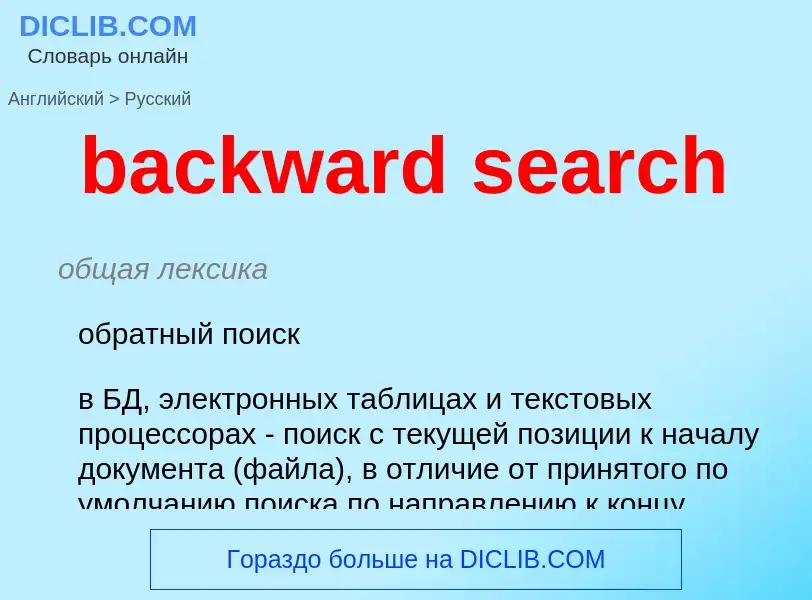Traducción y análisis de palabras por inteligencia artificial ChatGPT
En esta página puede obtener un análisis detallado de una palabra o frase, producido utilizando la mejor tecnología de inteligencia artificial hasta la fecha:
- cómo se usa la palabra
- frecuencia de uso
- se utiliza con más frecuencia en el habla oral o escrita
- opciones de traducción
- ejemplos de uso (varias frases con traducción)
- etimología
backward search - traducción al ruso
общая лексика
обратный поиск
в БД, электронных таблицах и текстовых процессорах - поиск с текущей позиции к началу документа (файла), в отличие от принятого по умолчанию поиска по направлению к концу документа
математика
обратная индукция
Wikipedia
Backward induction is the process of reasoning backwards in time, from the end of a problem or situation, to determine a sequence of optimal actions. It proceeds by examining the last point at which a decision is to be made and then identifying what action would be most optimal at that moment. Using this information, one can then determine what to do at the second-to-last time of decision. This process continues backwards until one has determined the best action for every possible situation (i.e. for every possible information set) at every point in time. Backward induction was first used in 1875 by Arthur Cayley, who uncovered the method while trying to solve the infamous Secretary problem.
In the mathematical optimization method of dynamic programming, backward induction is one of the main methods for solving the Bellman equation. In game theory, backward induction is a method used to compute subgame perfect equilibria in sequential games. The only difference is that optimization involves just one decision maker, who chooses what to do at each point of time, whereas game theory analyzes how the decisions of several players interact. That is, by anticipating what the last player will do in each situation, it is possible to determine what the second-to-last player will do, and so on. In the related fields of automated planning and scheduling and automated theorem proving, the method is called backward search or backward chaining. In chess it is called retrograde analysis.
Backward induction has been used to solve games as long as the field of game theory has existed. John von Neumann and Oskar Morgenstern suggested solving zero-sum, two-person games by backward induction in their Theory of Games and Economic Behavior (1944), the book which established game theory as a field of study.


